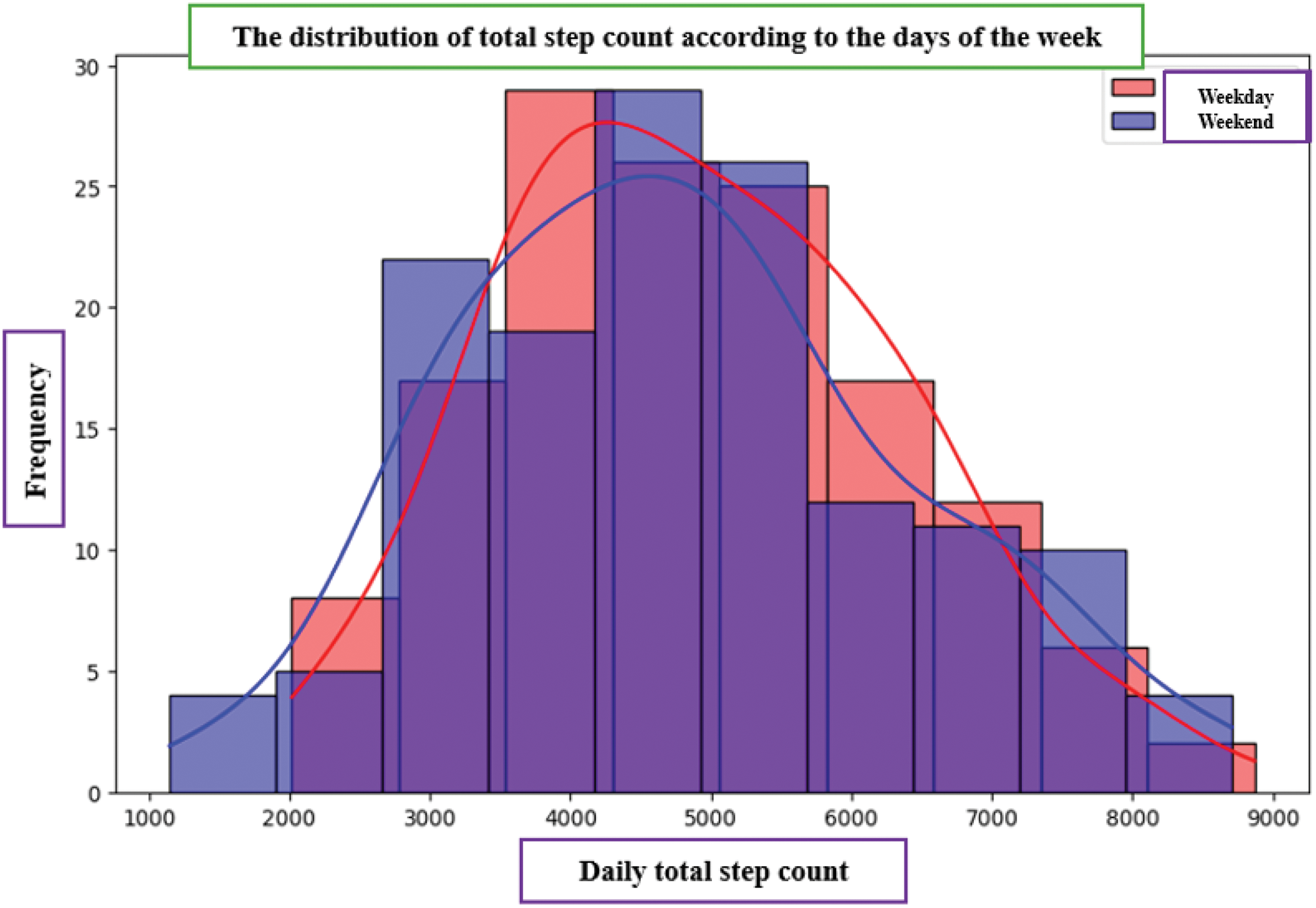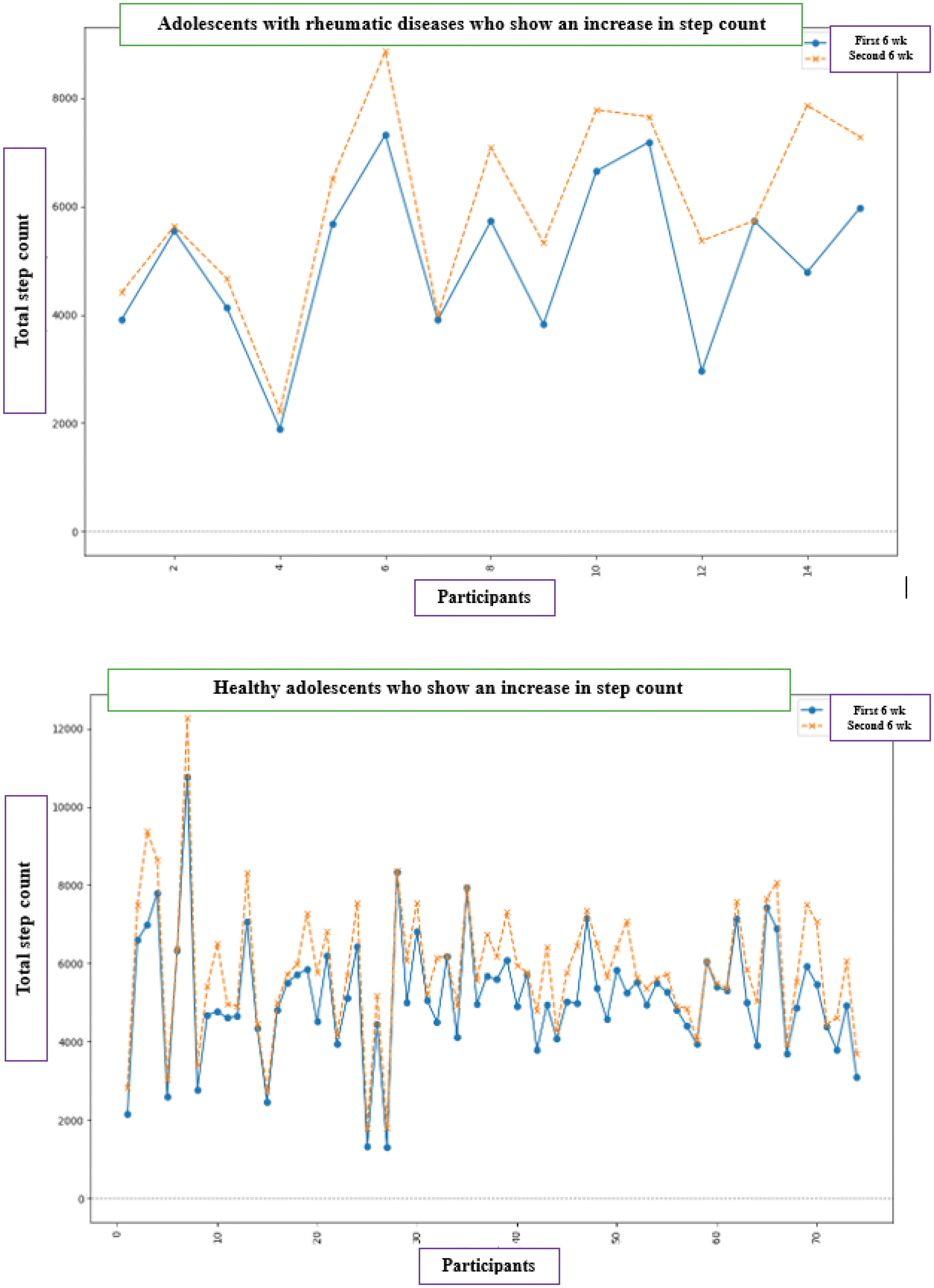

Background: Physical inactivity is a significant public health issue among both healthy adolescents and those with chronic rheumatic diseases. Despite the benefits of physical activity, most adolescents do not meet recommended activity levels [1, 2]. In this context, wearable activity trackers have emerged as a solution to reduce inactivity. These devices can encourage autonomous motivation by allowing self-monitoring of physical activity behaviors, ultimately increasing physical activity levels [3].
Objectives: The aim of the study was to monitor physical activity in adolescents with Juvenile Idiopathic Arthritis (JIA) and Familial Mediterranean Fever (FMF) over a period of 3 months using a smartwatch, to evaluate step counts and to compare these with their healthy controls.
Methods: 47 adolescents aged 12-18, diagnosed with JIA and FMF, and 274 healthy adolescents, were included in the study. Step counts of all adolescents were monitored for 3 months using a wearable activity device and the Pedi@ctivity Mobile Application, which operates on the Android system was developed by our team. The Pedi@ctivity Analysis Mobile Application comprises two modules as User Module and Supervise Module. Pedi@ctivity User Module where the user’s health data is obtained through a smartwatch, and Pedi@ctivity Supervisor Module, where the evaluation data of the user is recorded and the smartwatch data can be viewed and managed by the supervisor. The data collected from smartwatch devices is accessed through the Google Fit API, which enables the retrieval of data from wearable technologies or smartphones including historical data. Thus, the data obtained from adolescents’ smartwatch usage is transferred to the Pedi@ctivity Mobile Application for further analysis and management. Statistical analyses were performed using Python (version 3.9) with libraries including NumPy, SciPy, and pandas for data manipulation, and statsmodels or scikit-learn for advanced statistical and regression analyses.
Results: Over the 3-month follow-up period, the daily average step count of adolescents with chronic rheumatic diseases was 4735.78 steps, compared to 4873.90 steps for healthy adolescents. Adolescents with chronic rheumatic diseases had a significantly lower step count than their healthy peers (p < 0.05). When analyzed by gender, males with chronic rheumatic diseases had significantly higher daily step counts than females with the same condition (p < 0.05). Conversely, among healthy adolescents, males had significantly lower daily step counts than females (p < 0.05). For adolescents with chronic rheumatic diseases, the highest daily step count was observed on Tuesdays, while Sundays had the lowest. Among healthy adolescents, Thursdays had the highest step counts, and Tuesdays had the lowest. Weekend step counts for adolescents with chronic rheumatic diseases were significantly lower than their weekday counts (p < 0.05, t=2.41). In contrast, no significant difference was observed between weekday and weekend steps for healthy adolescents (p > 0.05, t=1.23) (Figure 1). During the first 6 weeks of smartwatch use, a significant increase in step counts was observed across all participant groups. However, a general decline in step counts occurred during the following 6 weeks. Among adolescents with chronic rheumatic diseases, 15 individuals demonstrated an increase of 1012.61 steps during the second 6-week period, though this change was not statistically significant compared to the first 6 weeks (p > 0.05). In healthy adolescents, 74 participants increased their step counts by 688.75 steps during the second 6-week period. Nevertheless, an overall decrease in average step counts during this time was statistically significant (p < 0.05) (Figure 2).
Conclusion: The findings reveal that adolescents with JIA and FMF have lower physical activity levels, as measured by daily step counts tracked via smartwatch and a mobile app, compared to healthy peers. This reduction may stem from physical limitations, fatigue, or other health issues. Step counts increased significantly during the first 6 weeks across all participants but declined in the following 6 weeks. Among adolescents with rheumatic diseases, the initial increase may reflect the motivational effect of wearable trackers, offering real time feedback and encouraging self-monitoring. However, this effect may wane over time due to persistent fatigue, pain, or loss of interest. For healthy adolescents, the decline in the second 6 weeks suggests a loss of initial enthusiasm. Seasonal changes, academic pressures, or lifestyle adjustments may also contribute to reduced activity levels. These findings highlight the need for sustainable physical activity interventions for both groups. For adolescents with rheumatic diseases, strategies should address barriers like pain and fatigue while incorporating personalized feedback and gamified elements. For healthy peers, interventions should focus on maintaining engagement and integrating physical activity into daily routines. Future research should examine these factors in greater depth to support long-term activity levels.
REFERENCES: [1] Kohl 3rd et al. 2012. The pandemic of physical inactivity: global action for public health, The Lancet.
[2] Bohr et al. 2015. Reduced physical activity in children and adolescents with Juvenile Idiopathic Arthritis despite satisfactory control of inflammation. Pediatric Rheumatology.
[3] Heale et al. 2018. A wearable activity tracker intervention for promoting physical activity in adolescents with juvenile idiopathic arthritis: a pilot study. Pediatric Rheumatology.
Distribution of Total Daily Step Counts Across the Days of the Week

Adolescents with JIA, FMF and healthy peers who demonstrate an increase in step count

Acknowledgements: This study was supported by the TUBİTAK 1001-Scientific and Technological Research Projects Support Program with project number 121E690.“
Disclosure of Interests: None declared.
© The Authors 2025. This abstract is an open access article published in Annals of Rheumatic Diseases under the CC BY-NC-ND license (